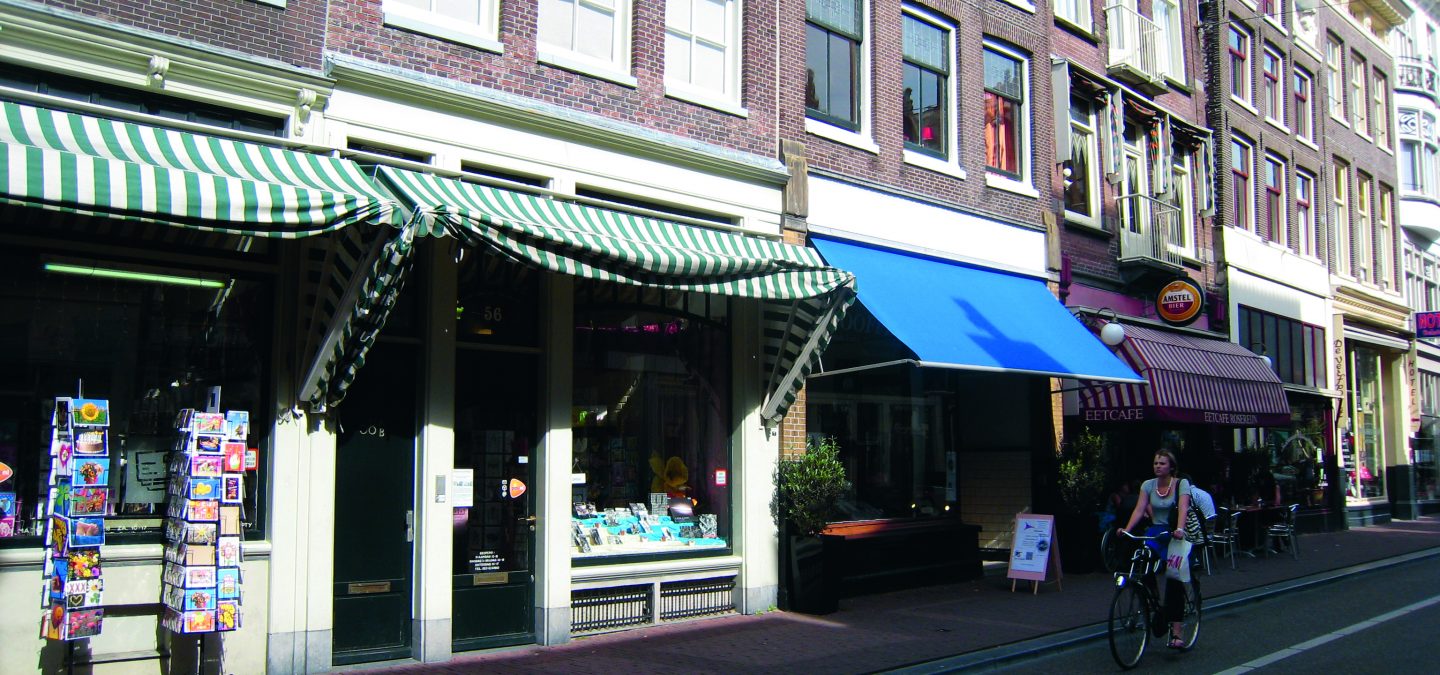
Keep up with our latest news and projects!

In the historical centre of Amsterdam, the Haarlemmerstraat and Haarlemmerdijk are known as the “best shopping-street in the Netherlands” according to a national survey in 2012. The miscellaneous and original shops and pleasant plinth with shop windows define its attractiveness. The street also has a human scale by small-scale parcelling of buildings and the profile of the street. And most of the buildings are original with authentic plinths, details and layout.
Residents, tourists and day-trippers, and locals from the rest of the city frequent the street. The street is not overrun by tourists, as is the case elsewhere in the centre. There are several hotels and B&B’s but they are small-scale, like the bars and restaurants which attract a specific kind of tourists and visitors. This mix of visitors comes for the specialized shops but also for the cinema and the restaurants. The success and attractiveness lies in a mix of supply, appearance and quality of the street. That this is not obvious depicts the story of the transformation of the street. Nel de Jager has since the late 1980s been involved in the changes of the street and tells about the approach.
The Haarlemmerstraat and -dijk were built early 17th century as part of the Canal district and Jordaan. The street was traditionally a shopping street, but reached a low point in the 1980s. In 1987 Nel de Jager went to work in the Haarlemmerbuurt district, and the street was totally different than now. “I started there during the urban renewal as a volunteer in the workgroup Shop-management, because I felt that the neighbourhood a good vibe and had potential. But those were the bad years of the area: there were bricked houses and shops, coffee shops, junkies etc. There was also a lot of squatted building that all had a shop or cafe. Because of this the area had a very unique atmosphere.”
It was the time that the exodus from the city was high. Many people moved from the centre to the new housing areas out of the city, many urban neighbourhoods had vacancies in that time. During this period the railway through the Haarlemmerbuurt district also widened, so many houses in the area were demolished. That’s why part of the purchasing power was gone in the neighbourhood, which had an effect on the stores.
“I went to work with the entrepreneurs, because they also saw the degradation and were afraid that their property would soon be worth nothing. For those retailers the value of the store also was their old age provision. We started working to continue to attract customers, so we could keep the shop functions. “But at that moment there was little believe in preserving the shopping function – especially at the city departments. According to economic research at that time the shops had no right to exist, except maybe for a supermarket.”
Some of the buildings had already been purchased by the municipality – which had unclear plans for renovation or demolition: “Because the bricked buildings gave a feeling of discomfort, we then worked on temporary management of those properties: temporary businesses and shop windows. And local artists painted the really bad buildings in the streets, so the outside looked more appealing.“
“For the existing retail space but also the new premises on the ground floor of the buildings, we then searched for new entrepreneurs: at the Institute of Small and Medium Businesses in Amsterdam I was involved in the movement of entrepreneurs in the urban renewal areas throughout the city. I came across nice companies and stores, which I approached with the question whether they would move to the Haarlemmerbuurt district. By convincing them of the future of the neighbourhood and the street but also with funding and low rents, we pulled those shops to our street. “
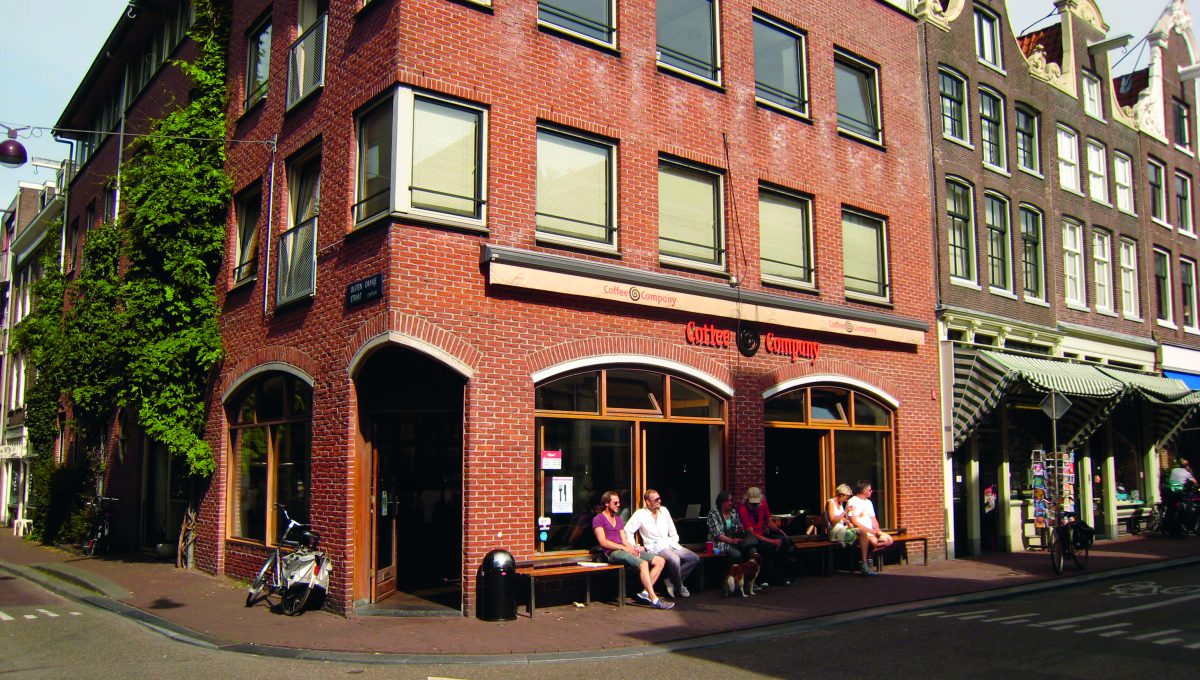
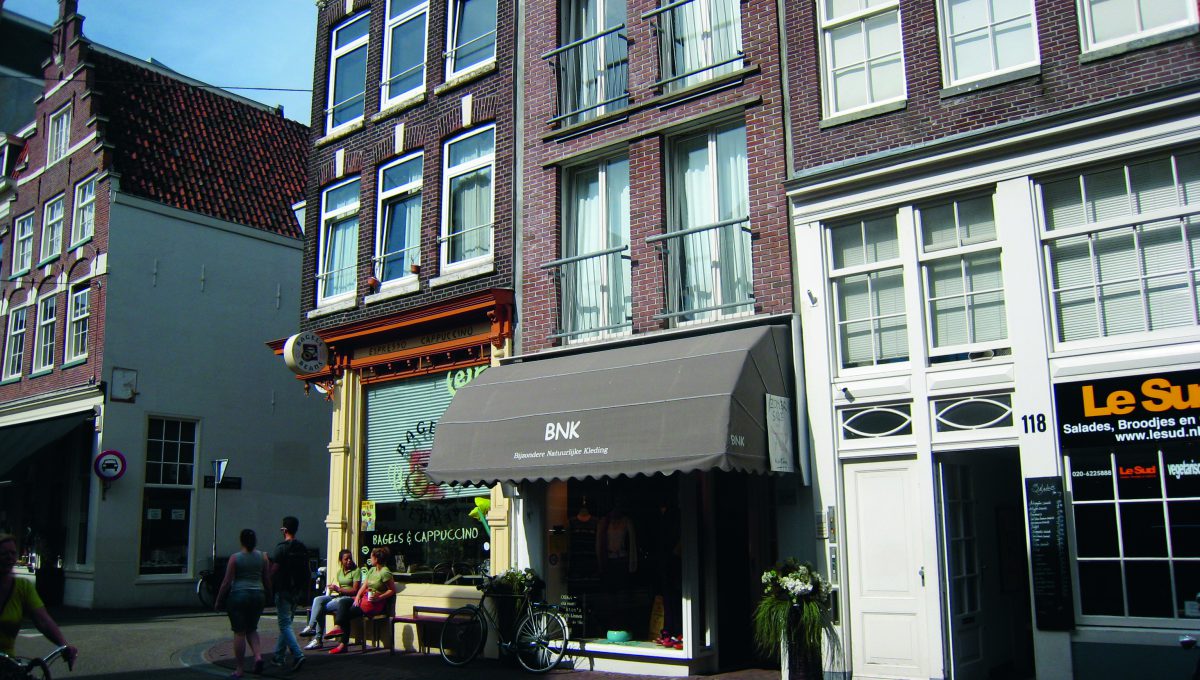
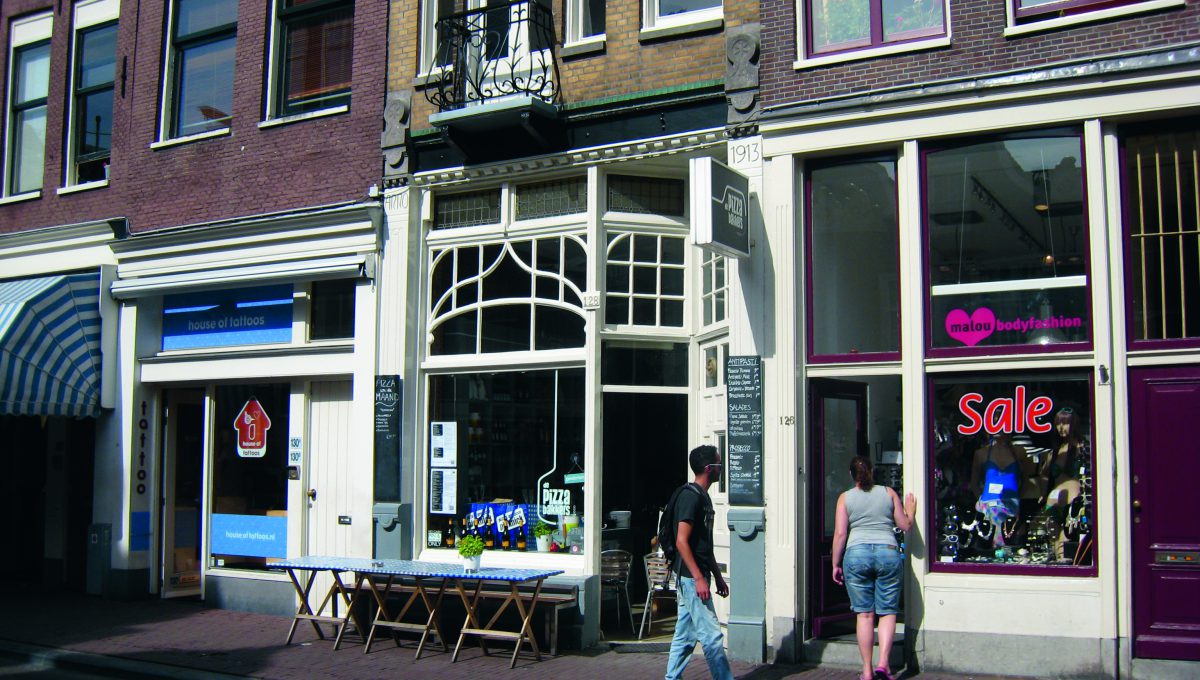
“When urban renewal was already underway and new large homes were built in the area, we noticed that more and more people wanted to stay in the city and didn’t want to leave. People got the opportunity of owning a larger home in the city and this meant the return of purchasing power and with it the retailers, and that again attracted new people to the street.”
“Moreover, many historical buildings were preserved, partly by the squatters who showed that housing and services could be maintained without major demolition. But also due to the loss of faith in the survival of the shops: many existing buildings had not been changed and as a result, original details and parcelling were preserved. The Haarlemmerstraat has a wide variation in the plinth (high, low, wide, narrow) that gives a nice feeling to the street. As shops that are too wide, such as supermarkets and large retail chains, leads to closed windows. Small shops provide an attractive storefront, but the appreciation of this quality only occurred over time. Afterwards you can conclude that the previous lack of faith in the street as a shopping street, has given the space and time for this approach and thus for the success of the street nowadays.”
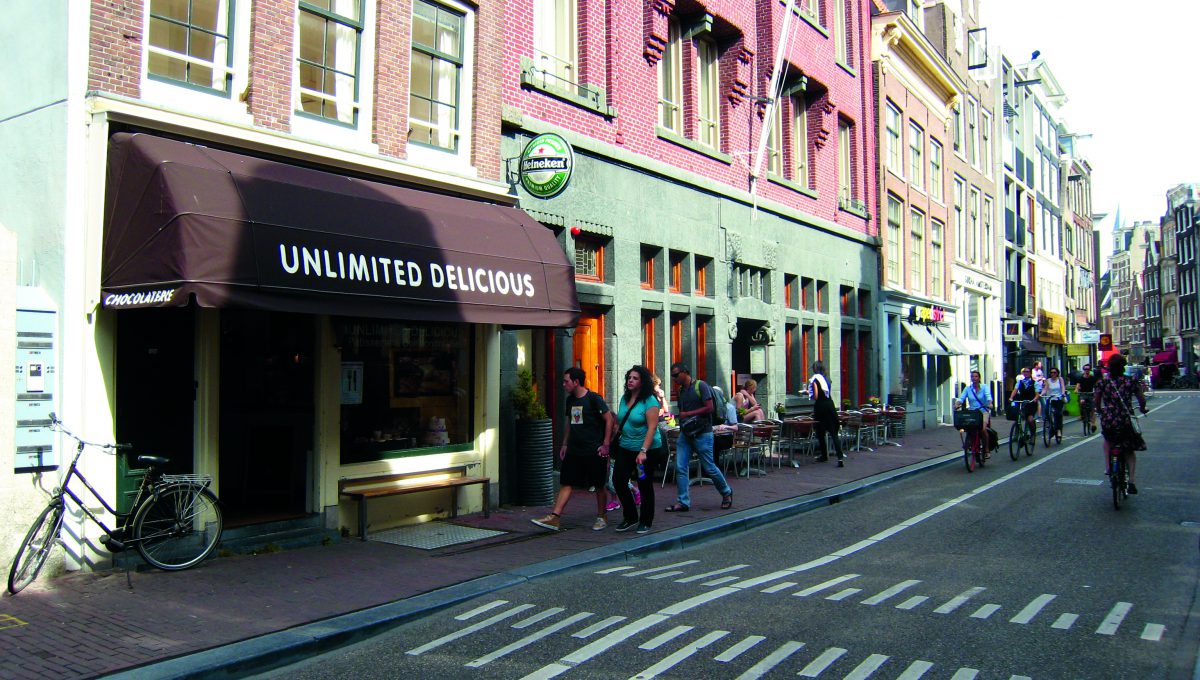
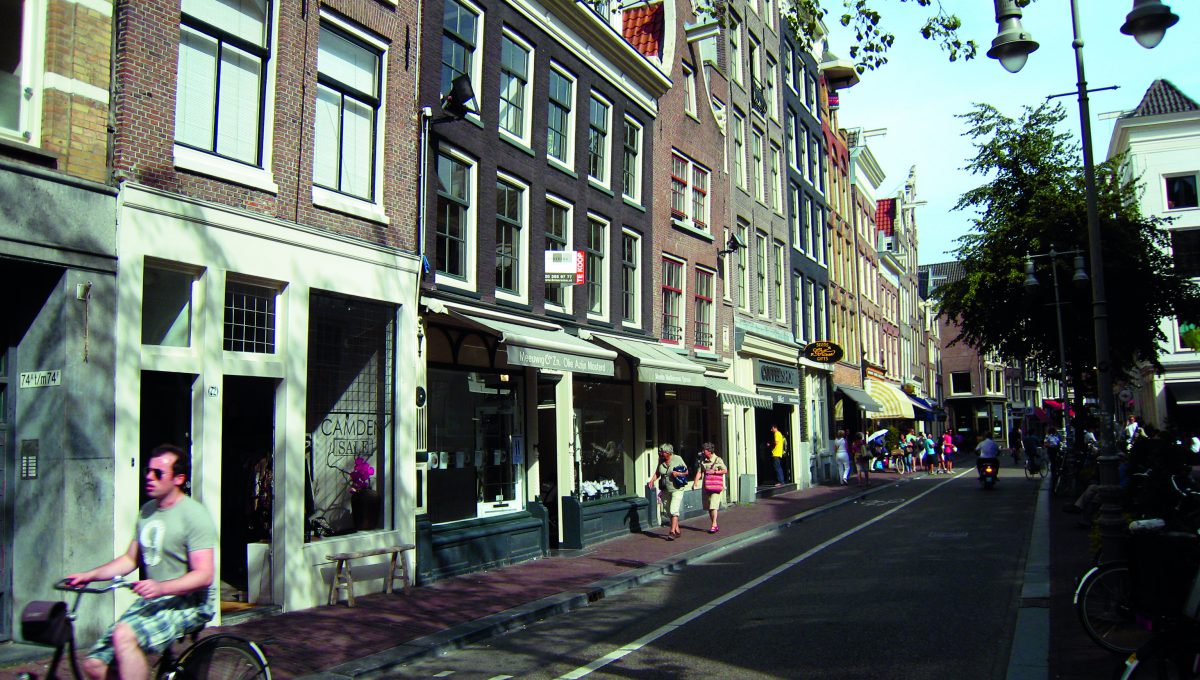
“Due to the new developments in Westerpark and the Westergasfabriek, the Haarlemmerstraat and –dijk are now part of the routing network of the city: people walking and cycling through from and to the station. The street has been refurbished with new street pavement in the second half of the 1990s. Initially, all parking spaces would disappear from the street, but we have managed to avoid that because it is important to have a few parking facilities along the street. Public space is not so much about the car versus other users, but the overall accessibility of the street: for delivering goods, for residents, and for those few visitors who want to come by car. The car is a guest in the street, the biggest problems are the cyclists and scooters racing down the street making it difficult for pedestrians to cross the street. We have to find a good balance between all these types of transport. The public space is important day and night. In the evening the street remains active and attractive, there are no closed shutters, people live there, there are restaurants – so the street is vivid and pleasant.”
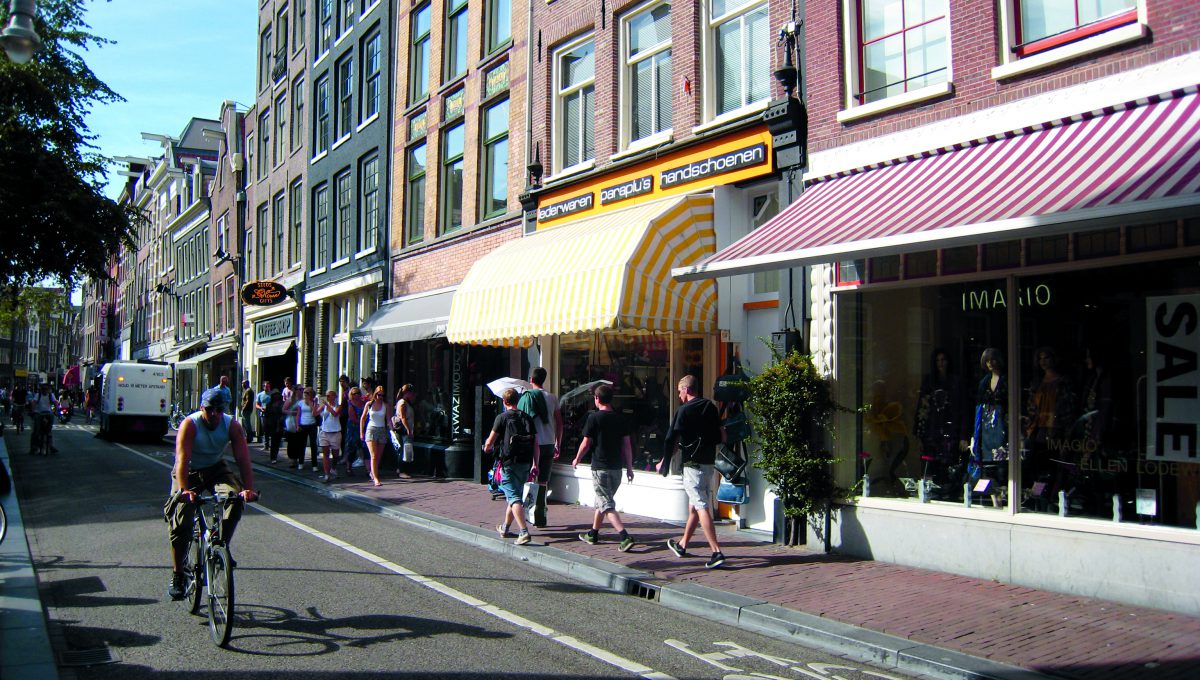
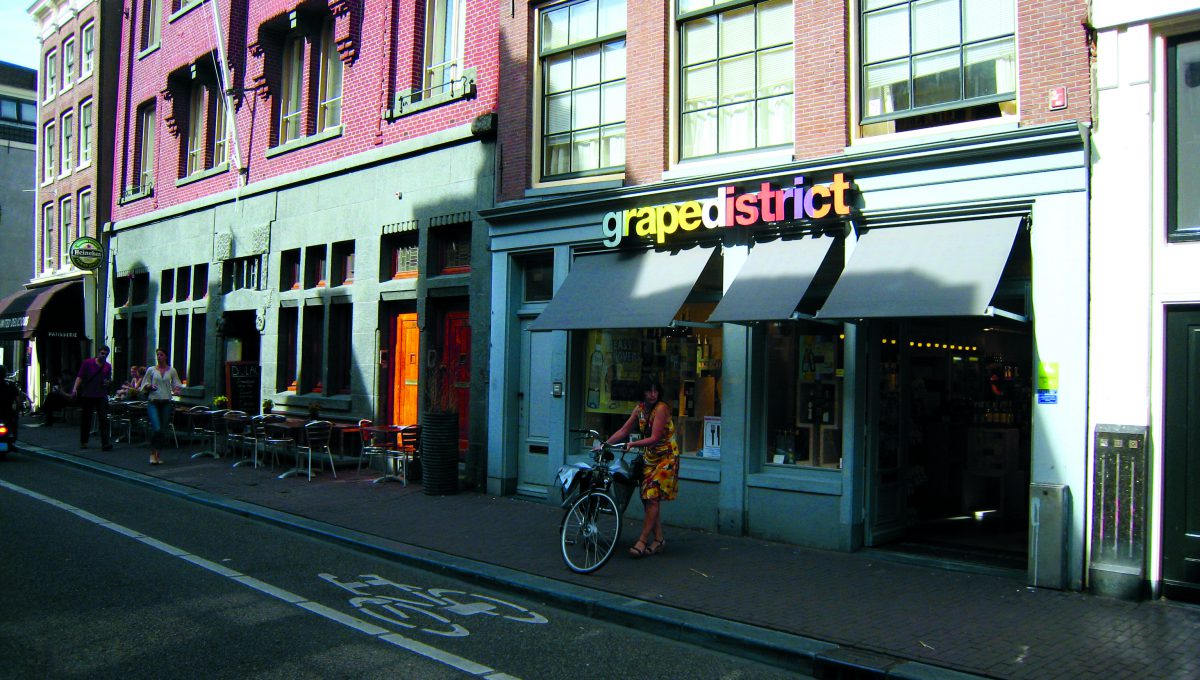
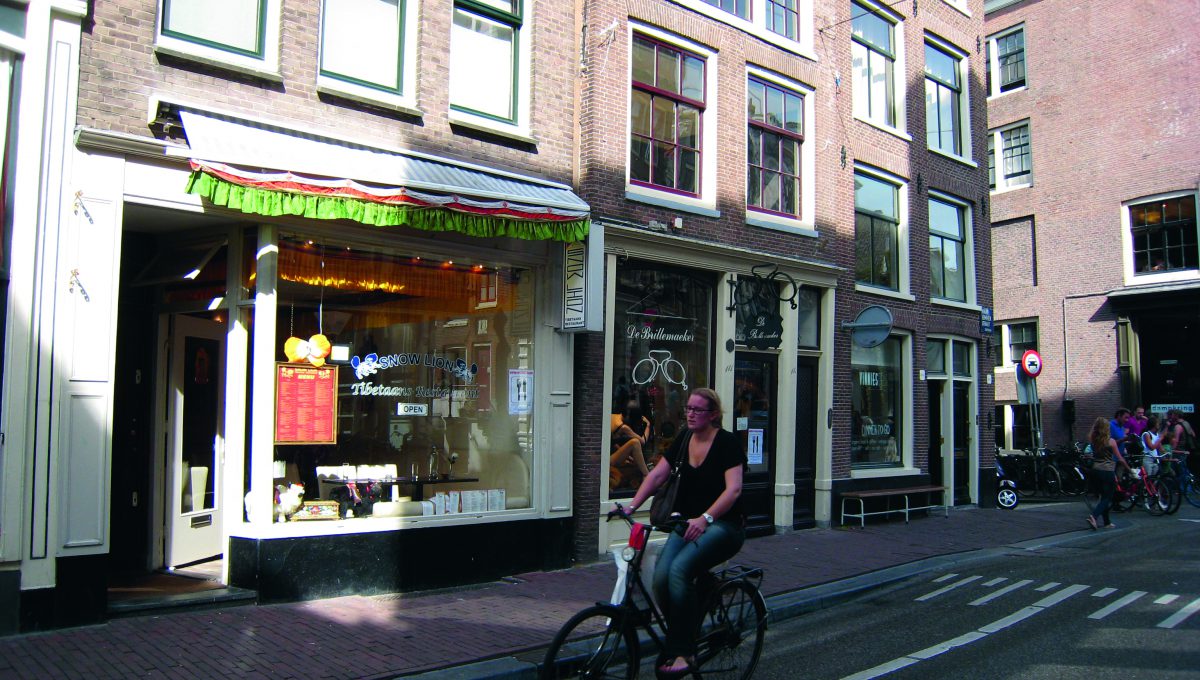
“My role as shopping street manager has become a lot harder over time, because the street became popular and the properties now yield profit for the owners driving up prices. At the same time we have to continue the positioning and the image of the street, and search for unique business and special industries. We have never focused on a specific segment as food or clothing, but wanted at least to preserve the shopping function for the neighbourhood.”
“The main vision for the street is about craftsmanship and diversity. What do you have and what not, and what entrepreneurs do you want in order to have a larger range of shops for the customers. Changes in retail are of all times (we don’t have a blacksmith any more) but it is the art to follow the dynamics, and to preserve the appearance of the street. There is no formula for how to do this, but my background as an urban sociologist teaches me to look at the small scale and the dynamics and respond to it – partly intuitive, you might say.”
Interested? Join The City At Eye Level and share your story!
Discover more“Every street in a historic city has its own identity, you need to find the DNA and elaborate on that. Each street should have its own distinct character, I often hear people say they want a street like the Haarlemmerstraat but you cannot copy that; it must connect with to the DNA of their own street and city. A street or shop is not a museum, it remains dynamic and must fit the needs of the neighbourhood at first. If you can’t attract visitors from your own district, then it will not work. You have to join the purchasing power of the area surroundings. And also the diversity of the neighbourhood is important.”
“Authenticity, parcelling, and historic buildings are a given, but you have to work on the process. Organizing a good street is a process that takes time and effort – especially to connect people and entrepreneurs. Do not think of a final image or a blueprint, but of a process, steps, and the dynamics of the shops. You have to sense the bottom-up movement and facilitate it, not a top-down approach as the municipality often does. I never approach a street as a project with a beginning and an end, but always as an organism that grows over time and that needs your constant attention.”